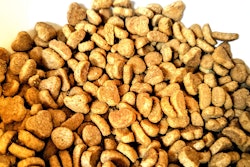
In the expanding world of pet nutrition, the raw and Biologically Appropriate Raw Food (BARF) diets have carved out a distinct niche, distinguishing themselves from traditional feeding. While both approaches include uncooked, natural ingredients, they diverge in their formulations.
The raw diet focuses on unprocessed meats, bones, fruits and vegetables, aiming for a well-rounded nutrient profile. Conversely, the BARF diet emphasizes a specific blend that mimics what animals might eat in the wild, incorporating muscle meat, organ meats, bones, and a smaller proportion of plant matter to mirror a natural carnivorous diet.
Pet food players in Mexico often inquire about these diets, questioning whether they are becoming a major trend in pet food. Initially, the market for raw and BARF diets began with small-scale, non-industrialized initiatives. Using well-crafted formulations and a blend of somewhat debatable yet compelling claims, these ventures have established a modest niche within the vast dry food market, though it remains relatively small and not particularly significant.
Brands such as Tamalitos, Rawhide, Mutt and Bleiz (the latter being the only dehydrated option) have made a remarkable entrance, now securing spaces in the freezers of national retail chains in Mexico. Their success story is not just about the product but also about strategic positioning and market adaptation. Emerging brands in this sector primarily promote themselves on social networks and Google Ads. Some follow the "dark kitchen" concept, akin to human food trends, where products are home-made without a physical storefront, sold online with delivery often constrained by geographical reach.
What's inhibiting the growth of raw and BARF diets in Mexico?
Currently, raw and BARF diets account for approximately 1% of the local wet food market. From a Triplethree International analysis, their market share could potentially reach 5% to 8% of the wet food segment. The primary growth limitation might not be the cost, as the prices of raw and BARF frozen diets are only marginally higher than commercial wet foods. Instead, the growth constraints could stem from the greater convenience of packaged, ready-to-eat commercial wet foods and the logistical challenges associated with maintaining a cold chain, which is essential for frozen foods but inherently more complex.
These diets cater to pet owners who prioritize natural, species-appropriate feeding regimes, willing to invest in what they perceive as optimal health benefits for their pets. Despite a somewhat higher price point, the dedicated following for raw and BARF diets underscores a growing consumer trend towards more natural pet food options.
As the market evolves, the trajectory of raw and BARF diets will be interesting to watch. While they may never dominate the pet food industry, their influence on consumer choices and mainstream pet nutrition practices is undeniable, pushing the industry toward more natural, health-focused alternatives.

















